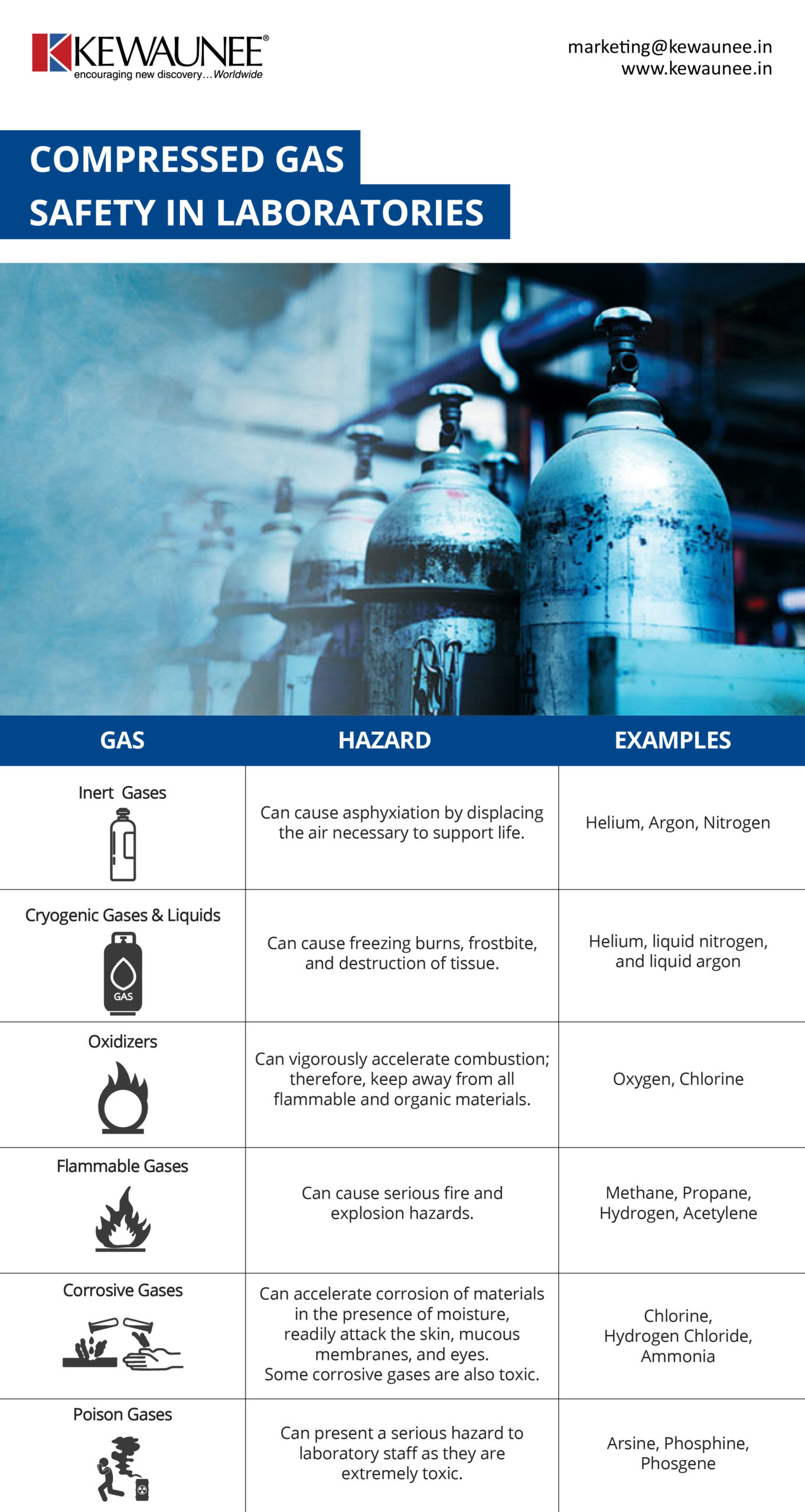Compressed Gas Safety In Laboratories
Compressed gases are commonly used in laboratories. The gases used can range from the inert gases to highly flammable and toxic gases. The compressed gas cylinders used for storage of the gases are one of the most common safety hazards in the labs.
Extreme caution must be exercised in handling and storing the compressed gases. The safety starts with the lab design and planning. It’s critical to clearly identify the contents of the gas cylinders and label them accurately. Likewise, good safety practices must be followed whilst transporting the cylinders, storing & securing them, and even segregating the incompatible gases.
In this blog, let’s look at the common compressed gas used in laboratories and the hazards they pose to humans and the environment.
| Gas | Hazard | Examples |
|---|---|---|
| Inert Gases | Can cause asphyxiation by displacing the air necessary to support life. | Helium, Argon, Nitrogen |
| Cryogenic Gases and Liquids | Can cause freezing burns, frostbite, and destruction of tissue. | Helium, liquid nitrogen, and liquid argon |
| Oxidizers | Can vigorously accelerate combustion; therefore, keep away from all flammable and organic materials. | Oxygen, Chlorine |
| Flammable Gases | Can cause serious fire and explosion hazards. | Methane, Propane, Hydrogen, Acetylene |
| Corrosive Gases | Can accelerate corrosion of materials in the presence of moisture, readily attack the skin, mucous membranes, and eyes. Some corrosive gases are also toxic. | Chlorine, Hydrogen Chloride, Ammonia |
| Poison Gases | Can present a serious hazard to laboratory staff as they are extremely toxic. | Arsine, Phosphine, Phosgene |
Ref: Univ. of Oregon
The EHS (Environment, Health, and Safety) guidelines for best practices and safety standards must be incorporated early on starting with the laboratory design. Kewaunee advisory service offers the best-in-class design, advisory, and turnkey execution services for general lab layout, infrastructure, equipment, HVAC, exhaust, gas distribution & electrical, fire protection, lab effluent & plumbing systems, operations and practically all aspects. Talk to us before you start your next lab project.
Comments are closed.











